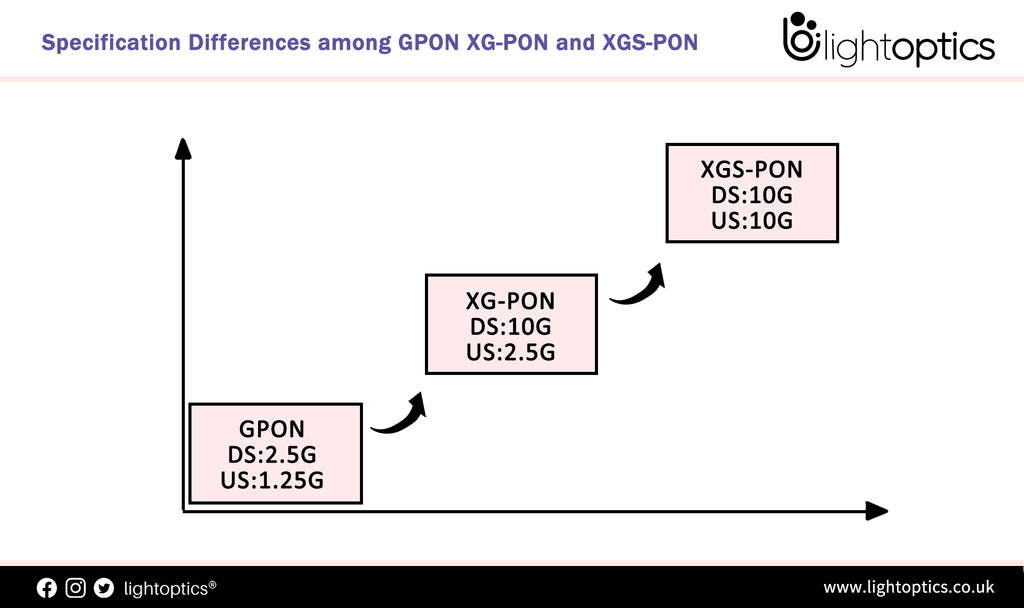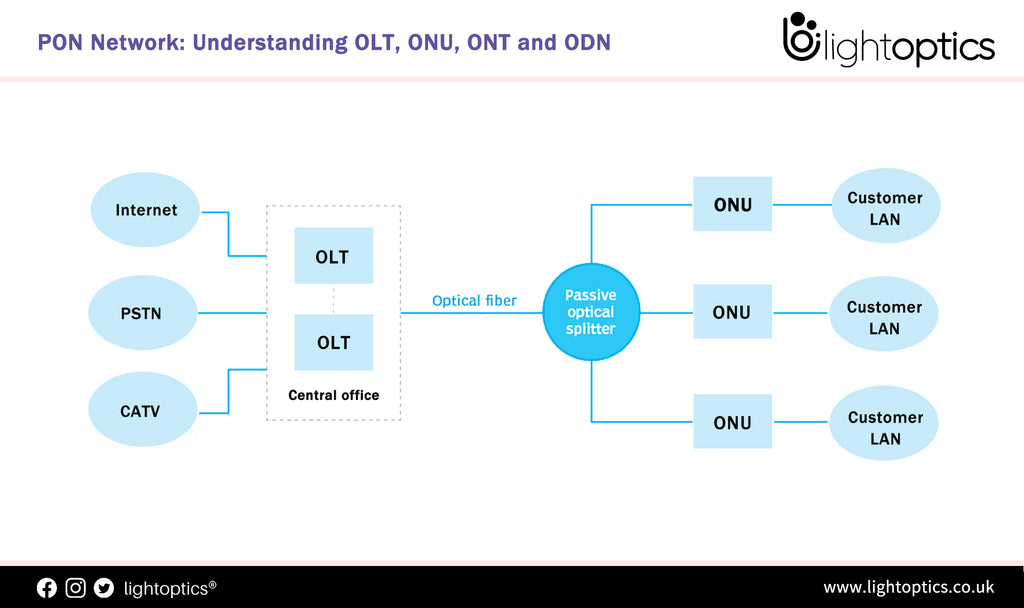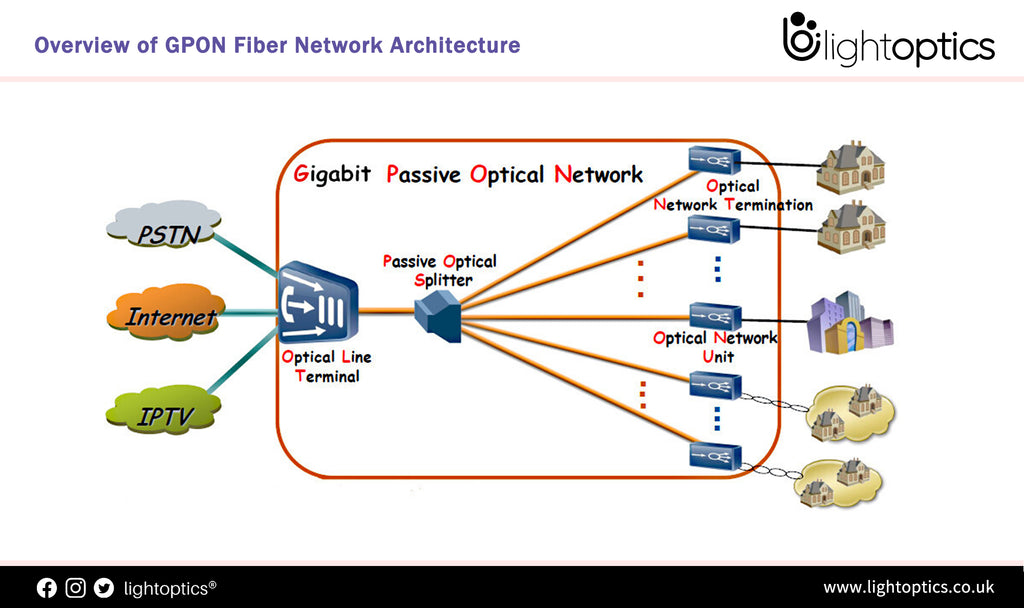-
Specification Differences among GPON XG-PON and XGS-PON
With telecommunication development these years, GPON has evolved to XGPON and XGS-PON step by step. PON has become the mainstream technology of FTTx network construction, but with users’ strong demands for high-bandwidth such as OTT Video and 4kTV, commercial use of 10G GPON has been put on the agenda by many operators. Moreover, from the perspective of technical standards and industrial chain development, 10G... -
PON Network: Understanding OLT, ONU, ONT and ODN
Fiber to the Home (FTTH) has started to be taken seriously by telecommunication companies around the world, enabling technologies to develop rapidly. Active optical networks (AON) and passive optical networks (PON) are the two major systems that make FTTH broadband connections possible. Unlike active optical network, PON network does not require electrical power to send signal to customers, becoming the technology of choice of telcos. The... -
Overview of GPON Fiber Network Architecture
Passive optical networks (PON) technology was available in the middle of 90s, is the highest speed, longest life, lowest cost network infrastructure available in the market, offering a genuine future‐proof access network with flexibility and upgrade capability well into the future. Since the huge development of network, various standards have been established and matured. PON developed from the first ATM PON (APON) and then evolved... -
What is Fiber to the Home (FTTH)?
What is FTTH Meaning? Fiber to the home (FTTH) is a fiber optic communication delivery form where the fiber extends from a central office to the boundary of a home living space or business office. Once it reaches the home or business office, the signal is conveyed throughout the space using coaxial cable, wireless, optical fibers or power line communication. FTTH includes various flavors of...
Customer Service: sales@lightoptics.co.uk
Shopping Cart
0
Close
Your Cart
Your cart is currently empty.






















